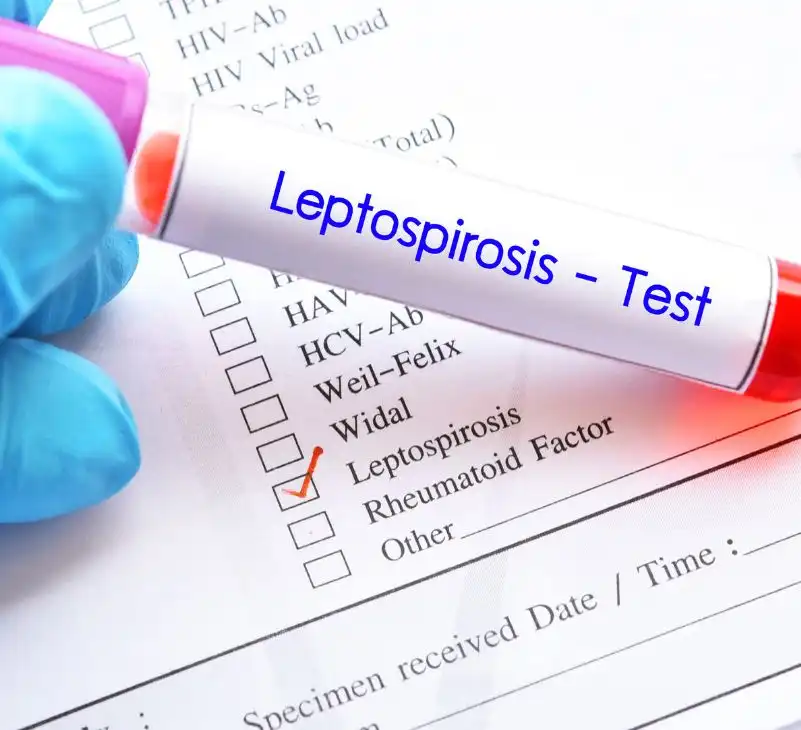
Leptospirosis is a bacterial infection caused by the Leptospira bacteria, which can be transmitted from animals to humans. It is prevalent in warm and humid regions, and activities like farming and water sports increase the risk of exposure. The symptoms range from mild to severe, including fever, headache, and muscle aches. Prompt diagnosis is crucial through clinical evaluation and laboratory tests. Treatment involves antibiotics and supportive care. Prevention strategies include avoiding contaminated water and soil and practising good hygiene. Vaccinating animals can also help control the spread of the disease.
Symptoms of Leptospirosis [1] [2]
Leptospirosis symptoms can vary widely, ranging from mild to severe. The primary symptoms include:
- Systemic Symptoms
Leptospirosis often presents with flu-like symptoms, including high fever, chills, headaches, muscle aches, joint pain, fatigue, weakness, and gastrointestinal issues such as nausea, vomiting, and diarrhoea.
- Organ-Specific Symptoms
As the disease progresses, it may affect specific organs, leading to additional symptoms. These can include abdominal pain, jaundice (yellowing of the skin and eyes), a skin rash, and kidney problems such as decreased urine output or the presence of blood in the urine.
Causes of Leptospirosis [1] [2]
Leptospirosis is caused by the Leptospira bacteria, primarily transmitted through:
- Contact with Infected Animals
The bacteria are shed in the urine of infected animals, especially rodents, livestock, dogs, and wildlife. Humans can become infected through direct contact with infected urine, saliva, or tissues of these animals.
- Environmental Exposure
Leptospira bacteria can survive in moist environments such as water or soil. Humans can contract the infection by coming into contact with water or soil contaminated with the urine of infected animals.
Diagnosis of Leptospirosis [3]
Diagnosing leptospirosis involves a combination of clinical evaluation and laboratory tests, including:
- Clinical Evaluation
Medical professionals assess the patient’s symptoms, medical history, and potential exposure to infected animals or environments.
- Laboratory Tests
Laboratory tests are conducted to confirm the diagnosis. These may include blood tests to detect the presence of Leptospira antibodies or DNA, as well as urine tests to identify the bacteria or antibodies.
Treatment of Leptospirosis [1] [4]

Leptospirosis treatment focuses on:
- Antibiotics
Antibiotic therapy is the primary treatment for leptospirosis. Doxycycline or penicillin is commonly prescribed to eliminate the bacteria from the body.
- Supportive Care
Supportive care measures include rest, hydration, and management of symptoms to relieve pain and discomfort.
- Hospitalization
In severe cases, hospitalization may be necessary for intensive care and intravenous antibiotics.
Prevention of Leptospirosis [1] [2]
Preventive measures play a crucial role in reducing the risk of leptospirosis:
- Protective Measures
Individuals working in high-risk environments should use personal protective equipment to minimize contact with potentially infected animals or contaminated materials. This is particularly important for farmers, veterinarians, and individuals involved in water-related activities.
- Vaccination
Vaccination is available for animals, but currently, there is no specific vaccine for humans.
- Hygiene Practises
Maintaining good personal hygiene is essential. This includes regular handwashing with soap and water, especially after handling animals or being in contact with potentially contaminated environments. Properly handling and disposing of waste materials is also important.
- Environmental Awareness
Raising awareness about leptospirosis and promoting practices that minimize the risk of environmental contamination, such as managing rodent populations and ensuring clean water sources, can help prevent the spread of the disease.
Conclusion
In conclusion, leptospirosis is a serious bacterial infection that requires timely diagnosis, appropriate treatment, and preventive measures. Early recognition of symptoms, such as flu-like manifestations and organ-specific complications, is essential for prompt medical intervention. The primary treatment approach involves the use of antibiotics to eliminate the bacteria from the body, while supportive care helps alleviate symptoms and promote recovery.
Prevention plays a crucial role in minimizing the spread of leptospirosis. Implementing protective measures, such as using personal protective equipment in high-risk environments, is vital for individuals working closely with animals or in water-related activities. Vaccination for animals, coupled with promoting good personal hygiene practices like regular handwashing, helps reduce the risk of transmission. Additionally, creating awareness about the disease, implementing effective rodent control measures, and ensuring clean water sources contribute to preventing leptospirosis.
It is important to note that the information provided in this article is for educational purposes only and should not replace professional medical advice. If you suspect you may have leptospirosis or have been exposed to the bacteria, it is advisable to consult a healthcare professional for an accurate diagnosis and appropriate treatment.
FAQs
- What is leptospirosis?
Leptospirosis is an infectious disease caused by the Leptospira bacteria that can affect both humans and animals.
- How is leptospirosis transmitted?
Leptospirosis is primarily transmitted through contact with water or soil contaminated with the urine of infected animals.
- What are the common symptoms of leptospirosis?
Common symptoms of leptospirosis include fever, muscle pain, headache, nausea, and abdominal pain.
- How is leptospirosis diagnosed?
Leptospirosis is diagnosed through blood and urine tests to detect the presence of the bacteria or antibodies.
- Can leptospirosis be prevented?
Yes, leptospirosis can be prevented by avoiding contact with contaminated water or soil, practising good hygiene, and taking appropriate protective measures when working in high-risk environments.

















